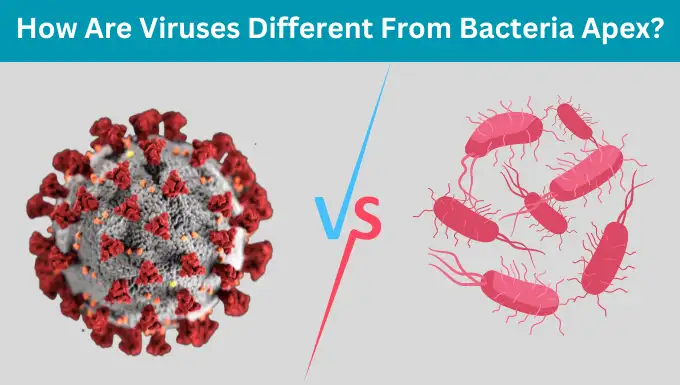News
The Assumira Handbook: A Complete Guide

Assumira, a term resonating with mystique and intrigue, holds within its folds a wealth of knowledge and possibility. To delve into Assumira is to embark on a journey of discovery, navigating through its history, understanding its significance, and harnessing its power. This handbook serves as a beacon, illuminating the path for both novices and seasoned practitioners of Assumira. Let us embark on this odyssey together, unlocking the mysteries of Assumira one page at a time.
History of Assumira
In this section, we will delve into the origins of Assumira, tracing its lineage through time and space. From ancient civilizations to modern interpretations, the evolution of Assumira offers invaluable insights into its significance and relevance today.
Principles of Assumira
The principles underlying Assumira form the bedrock upon which its practice stands. Understanding these principles is crucial for anyone seeking to harness the power of Assumira effectively. Let’s explore these foundational concepts in depth.
Applications of Assumira
Assumira isn’t merely a theoretical concept; it has practical applications across various domains. From personal development to professional endeavors, the versatility of Assumira knows no bounds. Join us as we uncover the myriad ways in which Assumira can enrich and transform lives.
Techniques to Master Assumira
Mastering Assumira requires more than just theoretical knowledge; it demands practical skills and techniques. In this section, we will delve into specific strategies and exercises aimed at honing your proficiency in Assumira. Get ready to roll up your sleeves and embark on a journey of self-discovery and growth.
Common Misconceptions
Despite its widespread recognition, Assumira is often shrouded in misconceptions and myths. It’s time to debunk these fallacies and set the record straight. Join us as we unravel the truth behind some of the most common misunderstandings surrounding Assumira.
Advantages of Assumira
The benefits of incorporating Assumira into your life are manifold. From enhanced creativity to improved problem-solving skills, the advantages of Assumira are undeniable. Join us as we explore the positive impact that Assumira can have on various aspects of your life.
Challenges in Assumira Practice
Like any discipline worth mastering, Assumira comes with its fair share of challenges and obstacles. In this section, we will identify these challenges and offer strategies for overcoming them. Get ready to confront the hurdles on your Assumira journey head-on.
Ethical Considerations
As practitioners of Assumira, it’s essential to navigate its waters with integrity and mindfulness. In this section, we will examine the ethical considerations inherent in the practice of Assumira. Let’s ensure that our pursuit of knowledge is guided by principles of respect and responsibility.
Frequently Asked Questions (FAQs) about Assumira
1. What is Assumira? Assumira is a cutting-edge software platform designed to streamline and automate the assumption management process within organizations. It helps in identifying, documenting, assessing, and monitoring assumptions critical to project success.
2. How does Assumira benefit organizations? Assumira offers numerous benefits, including improved decision-making, enhanced risk management, increased project success rates, better communication among team members, and ultimately, higher chances of achieving organizational goals.
3. What features does Assumira offer? Assumira provides features such as assumption identification and documentation, risk assessment tools, real-time monitoring, collaboration capabilities, customizable dashboards, and reporting functionalities.
4. Is Assumira suitable for all types of organizations? Yes, Assumira is designed to cater to the needs of various industries and organizations, including businesses, non-profits, government agencies, and educational institutions.
5. How easy is it to integrate Assumira into existing workflows? Assumira is designed with ease of integration in mind. It offers flexible integration options and can be customized to fit seamlessly into your organization’s existing workflows and processes.
6. Can Assumira be customized to meet specific organizational needs? Yes, Assumira is highly customizable. Organizations can tailor the platform to their unique requirements, including custom fields, workflows, reports, and permissions.
7. Is Assumira user-friendly? Absolutely. Assumira boasts an intuitive and user-friendly interface, making it easy for team members at all levels to adopt and use effectively.
8. How does Assumira ensure data security and privacy? Assumira prioritizes the security and privacy of your data. It employs industry-standard security protocols, encryption techniques, and access controls to safeguard your sensitive information.
9. Can Assumira be accessed remotely? Yes, Assumira is a cloud-based platform, allowing users to access it from anywhere with an internet connection. This enables remote collaboration and ensures that team members can stay connected, even when working from different locations.
10. How can I get started with Assumira? Getting started with Assumira is simple. Contact our sales team to schedule a demo and discuss how Assumira can help address your organization’s specific needs. We also offer onboarding support and training to ensure a smooth implementation process.
Conclusion
In conclusion, the Assumira handbook serves as a comprehensive guide to understanding and harnessing the power of Assumira. From its rich history to practical applications, this handbook offers valuable insights and resources for both beginners and seasoned practitioners alike. As you embark on your Assumira journey, may you unlock new dimensions of consciousness and realize the boundless potential that lies within. Embrace the mysteries of Assumira and let them guide you towards a life of fulfillment, growth, and transformation.

News
how are viruses different from bacteria apex

Viruses and bacteria are two distinct types of microorganisms that play crucial roles in biology and health. While they share some similarities, they also exhibit fundamental differences in their structure, function, and behavior. Understanding these differences is essential for comprehending their impact on ecosystems, diseases, and human health.
Structure and Composition
Viruses are microscopic infectious agents that consist of genetic material, either DNA or RNA, surrounded by a protein coat called a capsid. Some viruses also have an outer envelope derived from the host cell membrane. In contrast, bacteria are single-celled organisms with a relatively simple structure, comprising a cell wall, cell membrane, cytoplasm, and genetic material contained within a nucleoid region.
Reproduction how are viruses different from bacteria apex
Viruses replicate by hijacking the cellular machinery of host organisms, inserting their genetic material into host cells and using them to produce new viral particles. Bacteria, on the other hand, reproduce through binary fission, where a single cell divides into two identical daughter cells under favorable conditions.
Host Interaction
Viruses infect specific host cells by binding to receptors on the cell surface and injecting their genetic material. Bacteria interact with hosts by colonizing various body surfaces or tissues and releasing toxins or inducing inflammatory responses.
Genetic Material
Viruses can have either DNA or RNA as their genetic material, while bacteria typically have DNA as their genetic material, contained within a single circular chromosome. Some bacteria may also carry plasmids, small DNA molecules that can replicate independently.
Size and Complexity
Viruses are much smaller and simpler in structure compared to bacteria. They are typically measured in nanometers, whereas bacteria are measured in micrometers. Bacteria exhibit greater structural complexity due to their cellular organization and metabolic machinery.
Classification
Viruses are classified based on their genetic material, structure, mode of replication, and host range, whereas bacteria are classified primarily based on their shape, staining properties, and metabolic characteristics.
Role in Disease
Viruses are responsible for a wide range of infectious diseases, including the common cold, influenza, HIV/AIDS, and COVID-19. Bacteria cause diseases such as tuberculosis, cholera, strep throat, and urinary tract infections.
Treatment
Antiviral medications are used to treat viral infections by targeting specific stages of the viral replication cycle. Antibiotics are used to treat bacterial infections by inhibiting bacterial growth or killing bacteria outright.
Prevention
Preventive measures for viral infections include vaccination, hygiene practices, and antiviral medications. Preventive measures for bacterial infections include vaccination, sanitation, and antibiotic stewardship.
Evolution
Viruses have a high mutation rate and can rapidly evolve to evade host immune responses or develop resistance to antiviral drugs. Bacteria also evolve through mutation and horizontal gene transfer, leading to the emergence of antibiotic-resistant strains.
Ecological Impact
Viruses play vital roles in regulating microbial populations, nutrient cycling, and genetic diversity in ecosystems. Bacteria are involved in various ecological processes, such as decomposition, nitrogen fixation, and symbiotic relationships.
Research and Innovation
Research on viruses focuses on understanding viral pathogenesis, developing vaccines, and exploring antiviral therapies. Bacterial research encompasses areas such as antibiotic discovery, microbial ecology, and bioremediation.
Future Perspectives
Advancements in viral research may lead to improved diagnostics, more effective vaccines, and novel antiviral strategies. Bacterial research holds promise for the development of alternative antibiotics, microbial engineering, and ecological restoration.
Conclusion
In conclusion, viruses and bacteria are distinct entities with unique characteristics and roles in the natural world. While viruses are intracellular parasites that rely on host cells for replication, bacteria are autonomous single-celled organisms capable of independent growth and metabolism. Understanding the differences between viruses and bacteria is essential for disease management, ecological conservation, and biomedical innovation.
Unique FAQs
- Are all viruses harmful to humans? Not all viruses cause disease in humans. Some viruses are benign or even beneficial, while others can be highly pathogenic.
- Can bacteria be beneficial for human health? Yes, many bacteria have symbiotic relationships with humans and play essential roles in digestion, immunity, and vitamin synthesis.
- Why are antibiotics ineffective against viruses? Antibiotics target bacterial cell structures or processes that are absent in viruses, making them ineffective against viral infections.
- How do viruses mutate so quickly? Viruses have high mutation rates due to their replication process, lack of proofreading mechanisms, and genetic recombination.
- What measures can be taken to prevent viral outbreaks? Preventive measures such as vaccination campaigns, public health interventions, and surveillance systems can help mitigate the risk of viral outbreaks.
News
The Science Behind CBD

Cannabidiol, or CBD, is a popular remedy for various ailments. The government recognizes its amazing ability to reduce or eliminate seizures in people as young as two years old. Many people take CBD for arthritis pain, PMS, mental illnesses, and more. Some people swear that it can boost their immune systems. This is all fascinating, but it leaves most people wondering how CBD works. This article will help you discover the mysteries of the hidden system in the body responsible for these amazing benefits.
Endocannabinoid System
We all know about the nervous, endocrine, and digestive systems. We learn about the various systems of the body throughout our education. However, there is one more system we aren’t taught about in school: the endocannabinoid system. This system contains cannabinoid receptors that respond to cannabinoids, including THC and CBD. This system can help regulate parts of the nervous system, including mood, sleep, and even appetite.
Cannabinoid Receptors
Scientists continue to research to learn more about the endocannabinoid system. Right now, they know at least two primary receptors in the body. These receptors are called G-protein receptors. The first one, CB(1), is prevalent in specific brain areas. These receptors are often responsible for the psychoactive effect of particular cannabinoids, like THC. However, they can also help regulate mood. These receptors are found in smaller numbers throughout the body. Other receptors, called CB(2), are found in neurons and even the immune system. This shows us that CBD oil can help boost the immune system.
Continuous Discovery
The endocannabinoid system was discovered in 1988. While this may seem like a long time ago, it’s still relatively new regarding science. Scientists spend years studying various parts of the body and running trials to make accurate determinations. Because of that, there is constant ongoing research regarding this system. Scientists know that this system can help the body achieve homeostasis, but they are still learning everything they can about the receptors and how they work within the body.
CBD Oil’s Role
CBD oil is one of the cannabinoids that will bind to the receptors in the endocannabinoid system. It does not achieve the high that THC does when it binds to the receptors in the brain. Scientists continue to learn how it impacts the immune system and other body systems. Small studies have shown that these receptors can help inhibit cravings for different things, including nicotine and heroin. However, more research is being done. CBD oil should be pure CBD oil like the products sold at OnlyPure to ensure you can get the impact you want without the euphoria associated with THC.
In Conclusion
After discovering the endocannabinoid system, scientists continued to conduct research. The two primary cannabinoid receptors we know about are located in several areas and systems of the body, which tells us that cannabinoids have the power to impact various systems, diseases, and states of the body. As more research is conducted, we’ll learn more about the mysteries of this system, unlocking secrets to medicine we never knew existed.
News
Meet the press s76e49: Insightful Discussions and Analysis on Key Issues

The latest episode of Meet the press s76e49,” Season 76, Episode 49, continues to uphold its reputation as a platform for insightful discussions and in-depth analysis of key issues shaping our world today. In this article, we delve into the highlights of this episode, exploring the guests, topics discussed, key takeaways, and the overall impact of these discussions.
Introduction to “Meet the press s76e49”
“Meet the press” has long been recognized as a cornerstone of political discourse, providing a platform for experts, policymakers, and thought leaders to engage in meaningful conversations about pressing matters. Episode 49 of Season 76 lives up to this legacy, bringing together a diverse range of voices to dissect critical issues facing our society.
Overview of the Guests and Topics Discussed
In this episode, esteemed guests from various sectors, including politics, economics, and social advocacy, joined the discussion. The topics covered spanned a wide spectrum, from global geopolitical challenges to domestic policy debates. Notable figures shared their perspectives on issues such as climate change, healthcare reform, economic recovery, and international relations.
Key Insights and Analyses from the Episode
One of the standout features of “Meet the press s76e49” was the depth of analysis provided by the panelists. Expert opinions were backed by data, historical context, and real-world examples, offering viewers a comprehensive understanding of complex issues. The discussions went beyond surface-level debates, delving into the nuances and implications of proposed solutions.
Impact of the Discussions on Current Affairs
The impact of “Meet the press s76e49” extended beyond the confines of the episode itself. Insights shared during the discussions resonated with viewers, sparking further conversations in both traditional and digital media. The episode’s coverage influenced public discourse, shaping narratives and contributing to informed decision-making on key policy matters.
Audience Reception and Feedback
Feedback from the audience highlighted the value they found in the episode’s content. Viewers appreciated the balanced approach to addressing diverse viewpoints, the depth of analysis, and the relevance of topics discussed. Social media buzzed with discussions, showcasing the program’s ability to engage and inform a wide audience.
Conclusion on the Significance of “Meet the press s76e49”
In conclusion, “Meet the press s76e49” continues to serve as a vital platform for insightful discussions and rigorous analysis of key issues. Its impact on shaping public discourse and fostering informed dialogue underscores its importance in today’s media landscape. As we look ahead, the program remains poised to drive meaningful conversations and contribute to a more informed society.
FAQs about “Meet the press s76e49”
- Q: How often does “Meet the press” air new episodes?
- A: “Meet the press” typically airs new episodes weekly, providing up-to-date insights into current affairs.
- Q: Are the guests on “Meet the press” experts in their respective fields?
- A: Yes, the guests invited to “Meet the press” are often experts, policymakers, and influencers with deep knowledge and experience.
- Q: Can viewers interact with “Meet the press” online?
- A: Yes, viewers can engage with “Meet the press” through social media platforms, where discussions and highlights are often shared.
- Q: How long has “Meet the press” been on air?
- A: “Meet the press” has a rich history, having aired for several decades as a trusted source of news and analysis.
- Q: What sets “Meet the press s76e49” apart from other episodes?
- A: Each episode of “Meet the press” offers unique insights and discussions, but “s76e49” stands out for its timely and impactful topics.
-

 Tech1 month ago
Tech1 month agoUnveiling the Secrets of iamnobody89757: How an Ordinary Person Became an Internet Sensation Overnight!
-

 Blog1 month ago
Blog1 month agoEmbracing Mıllıeyt for a Balanced Lifestyle
-

 Entertainment1 month ago
Entertainment1 month agoGeekzilla Tio Geek: Thrive in Geek Culture with Your Essential Guide
-

 Blog1 month ago
Blog1 month agoFtmç: Unraveling the Mysteries of this Cutting-Edge Technology
-

 Blog2 months ago
Blog2 months agoThe Flower of Veneration Chapter 1
-

 Entertainment1 month ago
Entertainment1 month agoNavigating Niles Garden Circus Tickets: A Comprehensive Guide to an Unforgettable Experience
-

 Blog2 months ago
Blog2 months agoFour Digits to Memorize NYT: Unlocking Your Memory Potential
-

 Entertainment2 months ago
Entertainment2 months agothe Impact of Half of a 1990s-2000s Rock Duo with Six Grammys